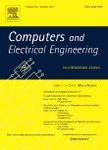版权所有:内蒙古大学图书馆 技术提供:维普资讯• 智图
内蒙古自治区呼和浩特市赛罕区大学西街235号 邮编: 010021

作者机构:Vellore Inst Technol Sch Comp Sci & Engn SCOPE Vellore 632014 Tamil Nadu India Vellore Inst Technol Sch Comp Sci & Engn Vellore 632014 Tamil Nadu India
出 版 物:《COMPUTERS & ELECTRICAL ENGINEERING》 (Comput Electr Eng)
年 卷 期:2025年第123卷
核心收录:
学科分类:0808[工学-电气工程] 08[工学] 0812[工学-计算机科学与技术(可授工学、理学学位)]
主 题:Hunter prey-optimizer Hunter Jaya African vultures optimization Deep fuzzy clustering Deep residual network African vultures optimization algorithm
摘 要:Coronavirus disease 2019 (COVID-19) is the infection caused by severe acute respiratory syndrome coronavirus 2 (SARS-CoV-2) which was first identified in patients with mild respiratory illness. Some patients having COVID-19 recover without special treatment, and some require severe medical attention. This COVID-19 medical data is of big data and it is significant to classify for intelligentization of medical information. In this paper, Hunter Jaya African Vultures Optimization-based Deep Belief Network (HJAVO_DBN) is proposed for big data classification. Initially, input data is subjected to Deep Fuzzy Clustering (DFC) for data partitioning, followed by a map-reduce framework that has a Mapper phase and a Reducer phase. In each mapper, preprocessing is done by Z-score normalization and feature fusion is done using the KumarHassebrook measure and Deep Residual Network (DRN). Afterwards, the output from the mapper phase is subjected to the reducer phase, where all fused data are initially merged and then fed to data augmentation for performing oversampling. Finally, big data classification is done by DBN that is structurally optimized using HJAVO, formed by the integration of Hunter Prey-Optimizer (HPO) and Jaya African Vultures Optimization (JAVO). Furthermore, JAVO is formed by combining the Jaya Algorithm and African Vultures Optimization (AVO). Moreover, the proposed HJAVO_DBN is analyzed for its effectiveness depending on various measures, like accuracy, sensitivity, and specificity, with greater performance of 92.28 %, 91.60 %, and 92.99 %.